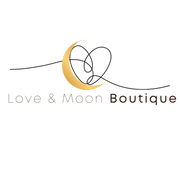Introduction to Tarot Reading: A Beginner's Guide
Introduction to Tarot Reading: A Beginner's Guide
Tarot reading is a practice that has been around for centuries and is still popular today as a tool for self-discovery, personal growth, and spiritual guidance. If you're new to tarot reading, it can seem overwhelming at first, but with a little bit of knowledge and practice, you can start reading the cards with confidence.
What is Tarot?
Tarot is a deck of 78 cards that are divided into two parts: the Major Arcana and the Minor Arcana. The Major Arcana consists of 22 cards that represent major life events and archetypes, while the Minor Arcana consists of 56 cards that represent everyday events and situations.
Each card has its own unique meaning and symbolism, and the reader uses these meanings to interpret the cards and provide guidance to the querent (the person asking for the reading).
Getting Started
Before you start reading the cards, it's important to choose a deck that resonates with you. There are many different types of tarot decks available, each with its own unique artwork and symbolism. Some popular decks include the Rider-Waite-Smith, the Thoth Tarot, and the Marseille Tarot.
Once you have chosen a deck, it's a good idea to spend some time familiarizing yourself with the cards and their meanings. Many decks come with a guidebook that provides detailed interpretations for each card, but you can also find online resources and books that can help you learn the meanings.
Reading the Cards
To perform a tarot reading, you will need to shuffle the cards and then lay them out in a specific pattern or spread. There are many different spreads to choose from, but some common ones include the three-card spread (past, present, future), the Celtic Cross spread, and the yes/no spread.
Once you have laid out the cards, you will interpret their meanings based on the position in the spread, the card's symbolism, and your own intuition. It's important to remember that tarot readings are not set in stone and are not meant to predict the future. Instead, they provide guidance and insight into your current situation and can help you make decisions and take action.
Tips for Beginners
Here are some tips for beginners to help you get started with tarot reading:
- Start with a simple spread, such as the three-card spread, until you feel comfortable with the process.
- Don't be afraid to use your intuition and personal associations with the cards to interpret their meanings.
- Keep a tarot journal to record your readings and reflect on their meanings over time.
- Practice regularly to improve your skills and confidence.
Conclusion
Tarot reading can be a powerful tool for self-discovery and personal growth, and with a little bit of practice and knowledge, anyone can learn to read the cards. By choosing a deck that resonates with you, learning the meanings of the cards, and practicing regularly, you can start using tarot as a tool for insight and guidance in your own life.

